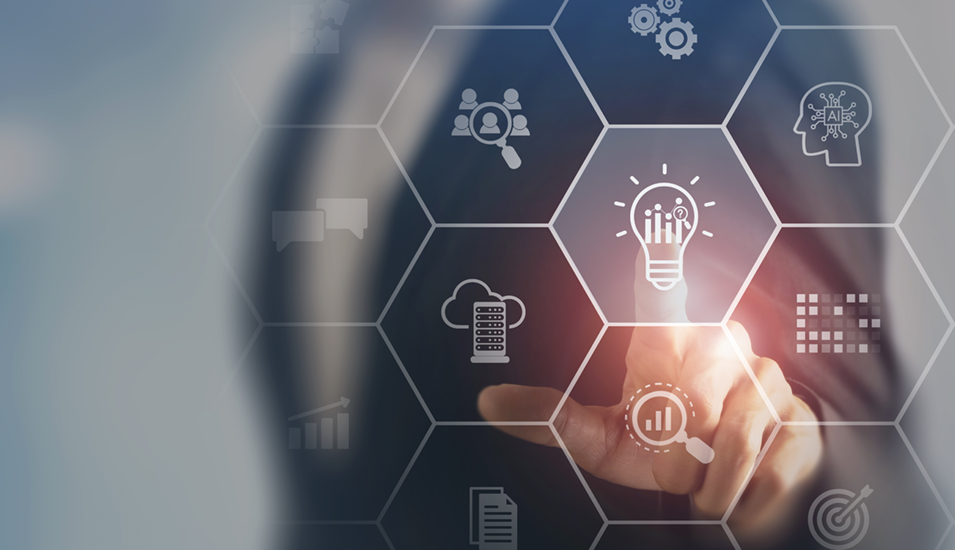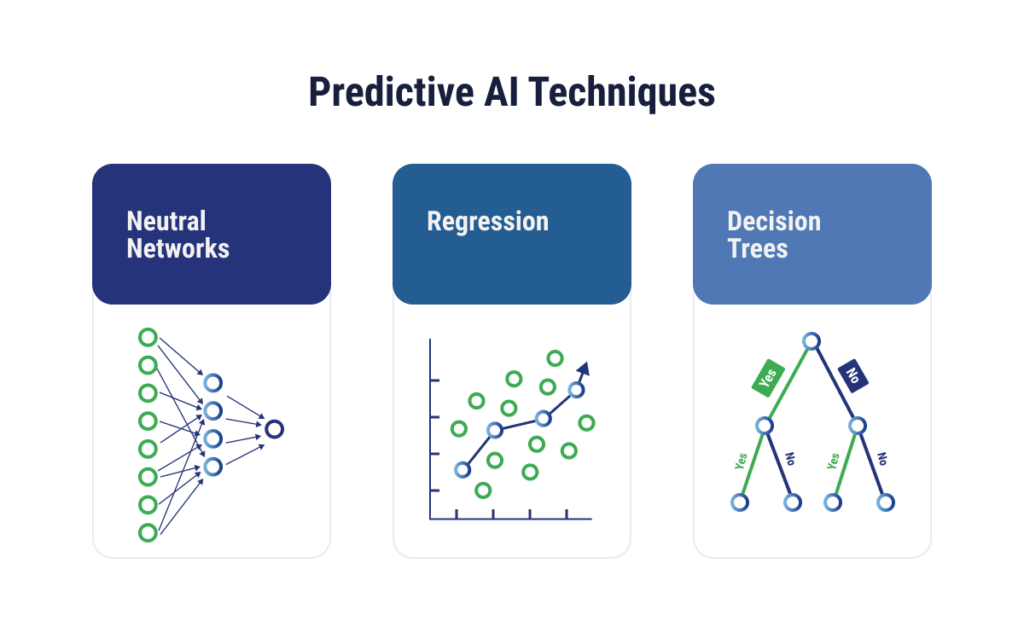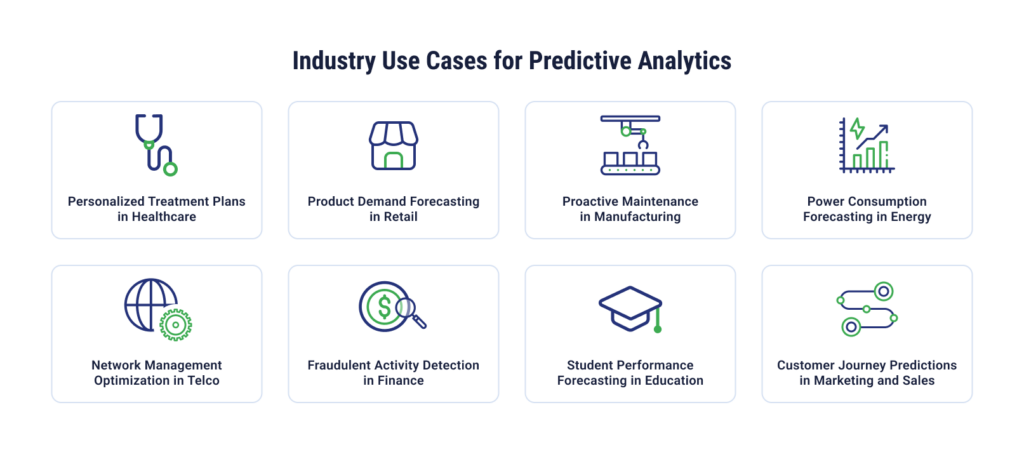
The ability to see into the future isn’t limited to science fiction, it’s available today with artificial intelligence (AI) and predictive analysis. AI for predictive analysis, also known as predictive AI, is expected to play many roles in 2024 and beyond, in particular, filling gaps in customer expectations and augmenting human knowledge. We’ll cover the many roles of predictive AI, its role in the cloud, and common techniques that might be used to conduct predictive analytics.
What is Predictive AI?
AI predictive analysis is an innovative approach that merges predictive analysis with artificial intelligence to forecast future events by leveraging historical data.
Unlike traditional predictive analysis, which relies on statistical methods, predictive AI harnesses the power of advanced AI technologies. These technologies encompass a range of capabilities, including natural language processing, computer vision, and deep learning. Through the application of these techniques, predictive AI excels in aggregating and analyzing vast sets of historical data, uncovering intricate patterns, and making more accurate predictions about future trends or outcomes.
How Does Predictive AI Work?
At its core, predictive AI adheres to a systematic process, leveraging sophisticated statistical models and machine learning (ML) algorithms to uncover hidden patterns and relationships within extensive datasets.
It begins by collecting data from diverse sources, followed by preprocessing to cleanse and format the data appropriately. It then learns patterns from this data using ML algorithms, fine-tunes its models through training and testing, and is then deployed to make predictions on new data. The model continuously learns with the help of a feedback loop, adapting and refining itself based on its predictions vs. actual outcomes. Predictive AI’s adaptability to changing conditions, interpretability, and its application in various sectors (such as finance, healthcare, marketing, and supply chain management) make it a valuable tool for making Informed predictions, optimizing processes and enhancing decision-making.
Common Techniques Used for AI Predictive Analytics
There are three main techniques used to conduct a predictive analysis: neutral networks, regression, and decision trees.

Neural Networks
Neural networks, inspired by the structure of the human brain, consist of interconnected nodes that recognize patterns in data. By identifying trends in historical data, neural networks can make accurate predictions about future events. Their ability to learn from complex datasets makes them particularly effective in various predictive analytics applications.
Regression Analysis
When you want to analyze the impact of one variable on another, it may be suitable to perform a regression analysis. This can help predict the behavior of one variable in response to another. AI automates regression analysis, offering the capability to perform both simple and complex models. This aids in predicting the behavior of one variable based on the influence of others, providing valuable insights for decision-making.
Decision Trees
In situations where understanding the reasoning behind a choice is challenging, decision trees come into play. These trees analyze collected data to elucidate the logic behind a decision, enabling the creation of algorithms for predicting outcomes related to specific variables. Decision trees are valuable tools for improving understanding and forecasting in predictive analytics.
8 Predictive AI Industry Use Cases
With its ability to process massive datasets, optimize operations, and predict future trends with incredible accuracy, predictive AI is truly revolutionizing how countless companies operate after AI adoption. While this model has many impactful applications, here are a few examples of how it can be used to benefit eight different industries.

Healthcare
Using previously collected patient data, predictive analytics can be used by those in the healthcare industry to deliver personalized treatment plans based on each individual health profile. Since cloud-based predictive models can process giant datasets, they can also be used to accelerate and optimize drug discovery and development timelines, predict their efficacy, and even identify potential best-fit drug candidates.
Retail
Retail businesses stand to lose money if inventory doesn’t keep up with demand. They can also lose money due to excess inventory they can’t sell. Predictive analytics can process historical sales data, market trends, and external factors to forecast demand more accurately so the right amount of product is in stock.
Companies that use predictive AI could see increases in customer satisfaction and sales – a study by CXsphere found that sales increased by 25% and customer satisfaction by 15% for brands that used predictive analytics.
Manufacturing
It’s widely recognized that proactive maintenance is more cost-effective than reactive repairs. Predictive AI leverages vast amounts of equipment sensor data stored in the cloud to anticipate potential machinery failures.
By analyzing usage patterns and normal wear and tear, manufacturers can gain insights into the condition of various parts. This proactive approach enables timely and targeted maintenance interventions, preventing unexpected breakdowns and ensuring the continuous and efficient operation of manufacturing machinery.
Energy
Predictive maintenance is also important for power grids, allowing for maximum uptime for communities. Additionally, another application of AI in the energy sector is energy consumption forecasting: historical data can be processed in a database to forecast energy consumption patterns and optimize distribution.
Telecommunications
In network routing, every added step can slow down transit time. AI tools can help communications providers with network management optimization, cutting down on unnecessarily long pathways and improving performance for the end-user by processing data on network traffic patterns.
Finance
While some fraud follows new patterns, other behaviors can be predicted. Predictive analysis can review transaction data in the cloud in real-time, identifying patterns indicative of fraudulent activity based on historical client data. This allows banks and other financial service institutions to detect anomalies in financial transactions and shut down fraudulent behavior before it impacts customers.
Education
Educators who can see early signs of student performance dips can better intervene and turn the tide before the semester or year is through. AI could be used to project student performance and grades based on historical academic data, allowing educators to identify those who may have areas needing attention and offer more opportunities for improvement.
Marketing and Sales
In marketing and sales, savvy businesses understand the economic benefits of customer retention over new client acquisition. AI is a valuable tool for this purpose, enabling easier identification of behaviors that signal potential customer churn. With these insights, sales teams can initiate proactive retention programs to strengthen customer loyalty to decrease the chance of cancellation.
Furthermore, AI models can be used to enhance marketing strategies by predicting customer journeys. This predictive capability provides valuable insights into key touchpoints and potential conversion paths, empowering marketing leaders to refine their approaches and foster more meaningful customer engagements.
Harnessing the Power of AI Predictive Analytics
As you can see, predictive AI is transforming the way organizations approach decision-making and innovation. Its ability to sift through complex datasets, identify patterns, and forecast future trends provides companies with the edge they need to remain competitive.
At TierPoint, we understand the power of innovation. Our forward-thinking consultants are dedicated to helping you harness the full potential of predictive analytics, ensuring that your business stays ahead of the curve and reaps the benefits of this groundbreaking technology. Learn more about our advisory and consulting services.
Interested in discovering AI/ML use cases? Download our infographic to discover a comprehensive breakdown of use cases across 12 prominent industries.

FAQs
AI can be used for predictive analytics to make future decisions, predict upcoming results, or analyze the likelihood a given variable is influenced by another variable using decision trees, neural networks, and regression analysis.
Predictive analytics relies on historical data to make predictions about future outcomes, whereas generative AI uses previously collected data to create completely new data, such as images, text, or code.
While any industry can benefit from AI predictive analytics, many use cases have emerged for healthcare, finance, retail, and manufacturing businesses.
